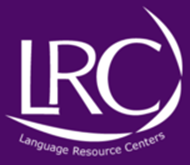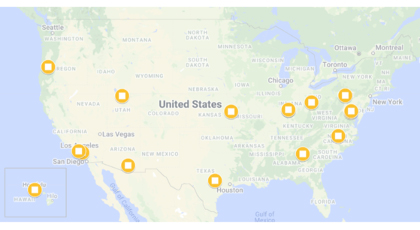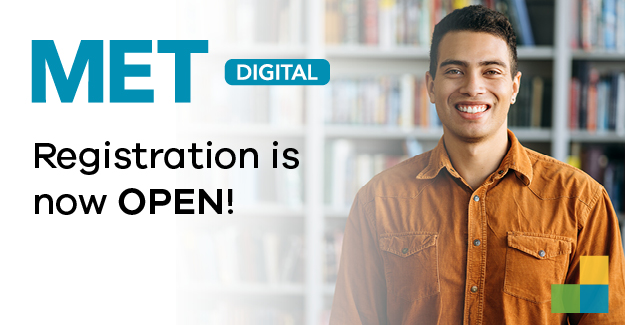


In honor of Women’s History Month, this Pass the Mic article features an interview with Chanda Austin, author of Qiana’s Braids, which was inspired by the lack of representation of Black girls and their hair stories as part of diverse children’s literature.
Tell us about yourself and your work advocating for linguistically diverse learners.
I currently work in DeKalb County Schools, a district outside of Atlanta, Georgia, as an English learner (EL) coordinator. I have been employed in DeKalb for over 20 years in several capacities. DeKalb County Schools serves over 15,000 linguistically diverse students and their families. I always tell people that we are a United Nations. Our department serves as a support for teachers, administrators, students, and their families. One of my most important roles, I believe, is ensuring that teachers are empowered with instructional strategies and knowledge to ensure that linguistically diverse learners are receiving equitable education.
That’s amazing! What are some of the languages represented in DeKalb? Can you give us an example of how you help to support and advocate for linguistically diverse learners?
There are over 150 languages spoken in DeKalb County Schools and over 160 countries of origin represented. The top three languages represented in our district are Spanish, with over 15,000 speakers; next Burmese, with over 1,000 speakers; and then Amharic, also representing over 1,000 speakers. In my role, I ensure that our schools are following state and federal guidelines as they relate to screening, placement, and instruction. As an advocate for our families, it is important that I am versed on current policies that relate to each of these areas. As we support our linguistically diverse families, our department houses a parent outreach program as well. In our parent outreach program, we teach parents about the day-to-day operations of the school district and most importantly how to navigate public education. We also empower them with the knowledge of whom they should contact about concerns. For example, at the high school level, it is important that parents know who the counselors are and their role in making sure that their children are on track for graduation.
In addition to serving as an advocate, you find time to write creatively. You wrote and published Qiana’s Braids. Tell us about that experience and why the story is needed.
I actually wrote Qiana’s Braids in 2018. Qiana’s Braids sat on my computer until the pandemic happened. It was during this time that it was completed and self-published. Qiana’s Braids was really birthed from two experiences. One, my daughter really struggled with her own hair and her self-esteem at the time. My stylist suggested that she wear braids to see how we could manage her hair differently. So, week after week, I would sit in the hair salon, and there was something about sitting there that I realized how our stories needed to be told. Our stories need to be told in an authentic, unapologetic space. I also wanted children of color to see themselves in the texts they read. I was really specific while working with my illustrator. I wanted to be sure the characters actually looked like Black girls. I believe that children should be able to see the story before they read the story.
So, would you agree that some underlying themes Qiana is addressing are self-love and care? Those concepts can be particularly difficult for young people. How does the belief that children should be able to see the story before they read the story help to cultivate cultural pride and validation? Especially the significance of braided hair.
As I think about the process of me actually putting the story of Qiana’s Braids on paper, I am reminded of what I wanted readers to walk away knowing and believing about Qiana, her family, and the Black hair experience, which is a story in and of itself. Oftentimes, people just think that braids are a protective hairstyle. I wanted my readers to have some history around braids and how important they have been in Black history and remain so as part of Black culture. For example, braids have been used to hide and transport valuable goods during the transatlantic slave trade. Enslaved Africans would use the patterns in their braids, also known as cornrows, to escape their plantations. So, as I think about cultural pride, being able to understand how a hairstyle could actually bring people to freedom is history that needs to be highlighted. I want all children to understand the importance of this information. I want little Black girls to read this book loud and proud and understand that they are representing an important part of history. I want policy makers to “humanize” Black hair and stop creating policies for Black people that make natural hairstyles “unprofessional.” There is nothing unprofessional about parts of your body.
The book has gone international! That’s fantastic, tell us about that partnership.
I have a beautiful partnership with Brothers and Sisters in Christ Serving (BASICS) International in Ghana, Africa. BASICS is an organization that is dedicated to ending illiteracy and poverty through promoting literacy and economic empowerment. I was able to donate 100 books to BASICS. I am excited about visiting Ghana this summer.
That’s fantastic! How did that partnership start?
As part of my work, I wanted to donate books to an international organization that focused on literacy. For guidance, I reached out to a friend who had donated dolls and books to Ghana. I was immediately directed to BASICS. I had several meetings with the founder, Patricia Watkins, to discuss how we could partner. Mrs. Watkins was very clear that their organization is intentional about having culturally relevant materials for the students who participate in their program. We had a lengthy conversation about Qiana’s Braids and how this story would be a beautiful addition to some of the work around literacy that they were already doing.
What are your plans for Qiana? How do you want her story to be shared?
After I return from Ghana, I will start writing another story about Qiana’s visit with her grandmother. I believe that being in that space will give me an authentic experience with Africa and will bring the story to life for readers. I am hoping that it brings a heightened awareness of diversity and diverse experiences.
What guiding questions/open-ended questions can we add to accompany a read-aloud? Think about lesson planning…
Qiana was getting her hair braided for the first time for Back to School. If you were Qiana, how would you feel?
What are some things that make you feel good about yourself?
Do you have any other writing projects you are working on? Do you view writing as a form of self-expression, advocacy, or something else?
I am currently working on a historically Black colleges and universities (HBCU) coloring book. This project is exciting because I am an HBCU graduate and several of my family and friends are HBCU graduates. I really wanted to celebrate the campuses that I chose to highlight and give children just a little bit of information about each one. Writing has become a form of therapy as well as advocacy. My hope is that I am writing relevant information to keep readers engaged, empowered, and happy about literacy.
What advice do you have for those who are interested in writing children’s books?
The biggest advice that I would give anyone who is interested in writing children’s literature is finding a good illustrator. As mentioned before, the pictures should tell the story. Also, invest in a good editor. I had to reprint my book several times because of errors that my human eye missed. Lastly, have fun! You have a story and someone needs to hear it.
Chanda Austin is an author, an educator, a proud member of Delta Sigma Theta Sorority, Inc., and mother to an amazing, talented teenage daughter. A native of Tuscaloosa, Alabama, Chanda holds a BS and an MEd from Alabama A&M University and an EdS in school leadership from Cambridge College.
















